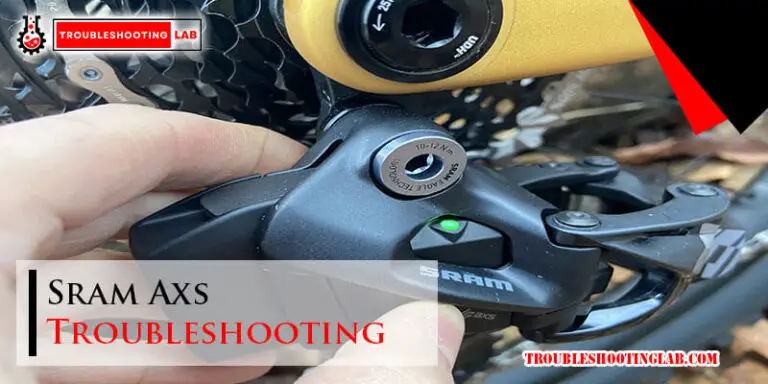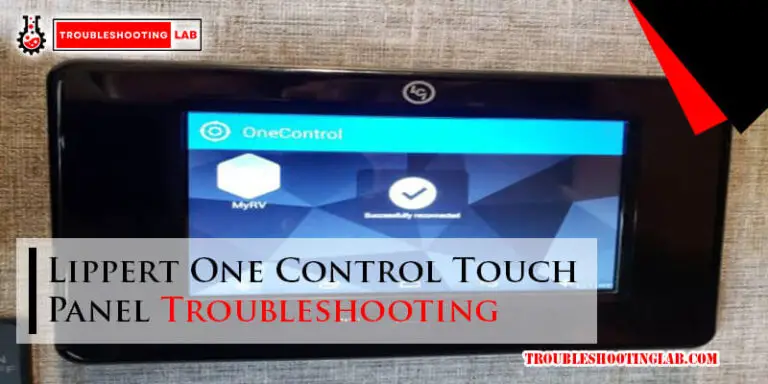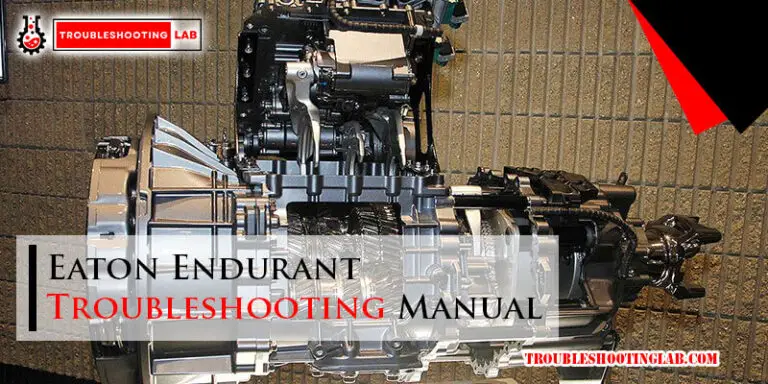48 Volt Club Car Troubleshooting: Expert Tips
Is your 48-volt Club Car giving you trouble? You’re not alone.
When your reliable golf cart starts acting up, it can be frustrating and confusing. Whether it’s a sudden power loss, strange noises, or a battery that just won’t hold a charge, these issues can disrupt your day. But don’t worry, there’s a way to get it back on track.
In this guide, you’ll find simple and effective troubleshooting tips that can save you time and stress. We’ll walk you through common problems and solutions, so you can quickly get back to enjoying smooth rides. Ready to tackle those Club Car woes and get rolling again? Let’s dive in and fix those pesky problems once and for all.
Common Issues In 48 Volt Club Cars
Owning a 48 Volt Club Car can be a fantastic experience, but like any vehicle, it comes with its fair share of challenges. Understanding common issues helps ensure your golf cart runs smoothly and efficiently. Whether it’s battery problems, motor malfunctions, or charger faults, each issue requires specific attention. Let’s dive into what you might encounter and how to tackle these problems effectively.
Battery Problems
Batteries are the lifeblood of your 48 Volt Club Car. If your cart isn’t running as long as it used to, battery issues might be to blame. Check for corrosion on the terminals. This is a common culprit and can be resolved with a simple cleaning.
Another issue is the battery not holding a charge. This might indicate it’s time for a replacement. How often do you check your battery water levels? It’s a simple habit but crucial for prolonging battery life.
Motor Malfunctions
Is your Club Car moving sluggishly or not at all? Motor malfunctions can disrupt your ride. Listen for unusual noises. They often signal underlying issues.
Check the connections and wiring. A loose wire could be the problem. Sometimes, a simple tightening can make all the difference. If problems persist, consult a professional. Don’t let a minor issue become major.
Charger Faults
The charger is essential for keeping your cart ready to go. If your charger isn’t working, inspect the power outlet first. It’s a straightforward check, but often overlooked.
What about the charger cable? Look for fraying or damage. This could be preventing proper connection. Consider the charger itself. If it’s old or damaged, replacing it might be the best option.
By addressing these common issues promptly, you can enjoy a seamless ride in your 48 Volt Club Car. Remember, regular maintenance goes a long way in preventing larger problems. What steps will you take today to ensure your cart is in top shape?
Diagnosing Battery Problems
Diagnosing battery problems in your 48 Volt Club Car can feel daunting, but it doesn’t have to be. Batteries are the heart of your vehicle, and when they falter, so does your ride. By understanding the basic steps to assess your battery’s health, you can keep your Club Car running smoothly and avoid unexpected breakdowns.
Checking Battery Voltage
Start by measuring the voltage of each battery in your series. A fully charged 8-volt battery should read about 8.49 volts. If any battery shows a significantly lower voltage, it might be underperforming.
Use a digital multimeter for precise readings. Make sure the Club Car is off and the battery terminals are clean before testing. A battery reading below 8 volts may indicate a need for charging or replacement.
Inspecting Battery Connections
Batteries rely on strong connections to deliver power effectively. Loose or corroded connections can lead to poor performance and even damage.
Examine the battery terminals and cables for corrosion or buildup. Use a wire brush to clean them gently if needed. Ensure all connections are tight and secure, as even a small amount of looseness can cause issues.
Testing For Battery Drain
A sudden drop in battery charge might suggest a drain. This can happen if a component is using power even when the car is off.
Check for any accessories left on, like lights or fans. Use a multimeter to measure the current draw with the vehicle off. A high reading could mean a parasitic drain, which needs to be addressed to prevent battery damage.
As you troubleshoot, remember that regular maintenance can prevent many battery issues. Have you ever noticed how a small oversight like a loose cable can lead to bigger problems? Keeping an eye on these details ensures your Club Car is always ready for your next adventure.
Motor Troubleshooting Techniques
Motor troubleshooting techniques are essential for ensuring your 48 Volt Club Car runs smoothly. Whether you’re hearing strange noises or experiencing power loss, understanding your motor’s behavior can save you time and money. Let’s dive into some practical methods to address common motor issues.
Assessing Motor Noise
Is your motor making unusual sounds? This could be a sign of worn-out bearings or other mechanical issues. Listen closely to pinpoint the source. A regular humming is normal, but grinding or screeching sounds might indicate a problem.
Try to replicate the noise under different conditions. Does it change with speed or terrain? Document these observations to help with diagnosis. Sometimes, a simple adjustment or lubrication can resolve the issue.
Evaluating Motor Power Loss
Experiencing a sudden drop in power can be frustrating. Check the connections and wiring first. Loose or corroded connections can lead to power issues. Ensure everything is securely fastened.
Are you using the correct voltage and battery setup? Mismatched components can lead to inefficient performance. Consider consulting your Club Car manual or a professional for guidance.
Examining Motor Brushes
Motor brushes play a crucial role in maintaining efficient operation. If your motor is acting up, inspect the brushes for wear. Replace them if they seem worn down or uneven.
Regular maintenance is key. Clean the brush holder and ensure it’s free of debris. A clean and well-maintained motor will serve you better in the long run.
Have you ever encountered a motor issue that seemed impossible to solve? Sometimes, the solution lies in the smallest detail. Keep your eyes and ears open, and don’t hesitate to seek expert advice if needed. Your Club Car’s performance depends on your attention and care.

Charger And Charging Issues
Experiencing charging problems with a 48 Volt Club Car can be frustrating. Common issues include faulty chargers, loose connections, or battery malfunctions. Regular maintenance and timely checks help in identifying and resolving these problems efficiently.
Charger and charging issues can be a major headache for any 48 Volt Club Car owner. Imagine you’re ready to hit the golf course or cruise around the neighborhood, but your cart refuses to budge. Often, the culprit lies in the charging system. Understanding and troubleshooting these issues can save you time, money, and a lot of frustration.
Analyzing Charging Cycles
To ensure your Club Car’s battery charges effectively, start by analyzing the charging cycles. Check if your charger is running its full cycle without interruptions. Frequent interruptions can lead to incomplete charges and battery issues. Is your charger turning off too soon? This could mean a faulty timer or sensor. A charger should ideally run for several hours to fully replenish the battery. If it doesn’t, it might be time to investigate further.
Identifying Charger Errors
Charger errors can often be identified through error codes or warning lights. Does your charger display a blinking light or error code? Refer to the manual to decipher these signals. Sometimes, the solution is as simple as resetting the charger. Unplug it, wait for a minute, then plug it back in. Check if your charger connects snugly to the power source and the cart. Loose connections can mimic serious issues.
Ensuring Proper Charging
Proper charging goes beyond just plugging in the charger. Make sure the charging outlet provides consistent power. Have you ever noticed your charger acting up during a storm? Power fluctuations can impact charging efficiency. Regularly inspect the charging cables for wear and tear. Frayed wires or loose plugs can hinder the charging process. A simple visual inspection could save you from prolonged charging problems. Address these charging issues head-on to keep your Club Car running smoothly. What changes will you make today to ensure a reliable ride tomorrow?
Electrical System Checks
Understanding the electrical system of a 48 Volt Club Car is crucial for maintaining its performance and longevity. Whether you’re a seasoned golf cart enthusiast or a newcomer, knowing what to check and how to troubleshoot can save you time and money. Electrical issues can often seem daunting, but breaking them down into manageable tasks makes them easier to tackle. Let’s dive into some essential electrical system checks that can help keep your cart running smoothly.
Inspecting Wiring Harness
Start by giving your wiring harness a thorough inspection. Look for any visible damage such as cuts, burns, or frayed wires. Even a small nick can cause significant problems.
Check for loose connections. Gently tug on wires to ensure they are securely attached. A loose wire might be the culprit behind an intermittent power issue.
It’s also wise to clean any corroded terminals. Corrosion can impede the flow of electricity and lead to poor performance.
Testing Solenoids
Solenoids are critical components that control the flow of electricity to your motor. To test them, listen for a click when you press the accelerator. No click? The solenoid might be faulty.
Use a multimeter to check for continuity. Set your multimeter to the ohms setting and measure across the two large terminals. A reading that’s too high or too low indicates an issue.
Consider replacing the solenoid if it fails the tests. It’s a relatively simple fix that can make a big difference.
Verifying Controller Function
The controller is like the brain of your cart. To verify its function, start by checking for any error codes. These codes can provide insight into specific issues.
Ensure the controller is receiving power. Use a voltmeter to check the input voltage. If the voltage is off, the controller might not function properly.
Think about the last time you updated your controller’s software. Sometimes, a simple update can resolve unexpected issues and improve performance.
Have you ever found an issue with your Club Car that seemed complex but was solved by a simple check? Share your experiences and tips in the comments. Your insight could be invaluable to fellow readers facing similar challenges.
Preventive Maintenance Tips
Keeping your 48 Volt Club Car in tip-top shape isn’t just about fixing problems as they arise; it’s about preventing them. Adopting a routine of preventive maintenance can save you from unexpected breakdowns and costly repairs. It’s about creating a smoother ride and a longer life for your vehicle. Let’s dive into some practical tips that will help you keep your Club Car running efficiently, enhancing both its performance and your peace of mind.
Regular Battery Maintenance
Your batteries are the heart of your Club Car. Ensuring they are in good condition is crucial. Check the water levels in the batteries every month. Low water levels can lead to reduced performance and battery life. Make it a habit to clean the terminals to prevent corrosion. A friend once shared how he avoided an expensive battery replacement just by cleaning the terminals regularly. Remember, a little care goes a long way.
Routine Motor Checks
The motor is the powerhouse of your Club Car. Routine checks can prevent major issues. Listen for any unusual noises while driving. They could be signs of wear and tear. Consider a monthly visual inspection to identify any visible damage or loose components. One time, tightening a loose bolt saved me from a motor replacement. What small issue could you catch early?
Scheduled Electrical Inspections
The electrical system is the nervous system of your Club Car. Regular inspections are essential. Schedule a comprehensive check of all wiring and connections at least twice a year. Look out for frayed wires or loose connections. An acquaintance once spotted a frayed wire, preventing a potential electrical failure. Are you overlooking any electrical details that could lead to bigger problems?
Implementing these preventive maintenance tips can transform your Club Car experience. You’ll enjoy smoother rides and fewer unexpected issues. So, what steps will you take today to ensure your vehicle is ready for every adventure?
Expert Advice And Resources
Having trouble with your 48 Volt Club Car? Expert advice can save you time and effort. Understanding the right resources is crucial for effective troubleshooting. Whether consulting professionals or utilizing online forums, help is available. Accessing repair manuals can also be a game-changer. Let’s delve into these useful resources.
Consulting Professionals
For complex issues, consulting professionals is wise. They offer insights based on experience. You gain access to specialized knowledge. Professionals can diagnose problems quickly. This saves you from trial and error. They also provide reliable solutions. Trust their expertise to get your car running smoothly.
Utilizing Online Forums
Online forums are treasure troves for information. Many enthusiasts share their experiences there. You can find solutions to common issues. Engage with the community to learn from others. Ask questions and share your challenges. Forums often have step-by-step guides. They cover various troubleshooting techniques. It’s a great way to learn from diverse perspectives.
Accessing Repair Manuals
Repair manuals are essential resources. They provide detailed instructions for fixing problems. Manuals include wiring diagrams and specifications. You can follow procedures for accurate troubleshooting. Accessing these can prevent costly mistakes. Manuals often have illustrations for clarity. They are invaluable for both beginners and experts.
Conclusion
Troubleshooting a 48 Volt Club Car can seem daunting. But with patience, it becomes easier. Understanding common issues can save time and effort. Regular maintenance helps prevent future problems. Check the battery, wiring, and connections often. Listen for unusual noises.
They can signal potential issues. Keep your tools handy for quick fixes. With these tips, your Club Car can run smoothly. Enjoy your ride without worry. A well-maintained car offers peace of mind. Stay proactive, and your Club Car will serve you well.






